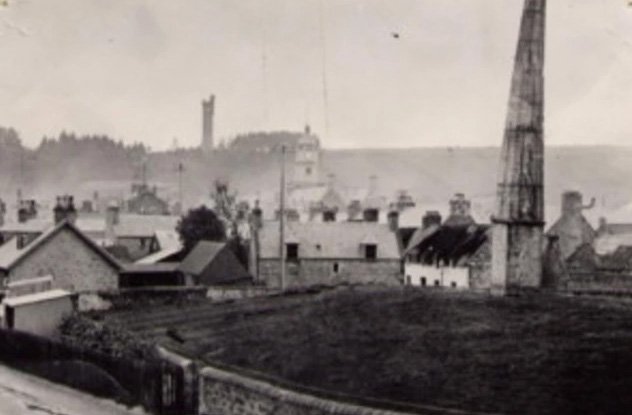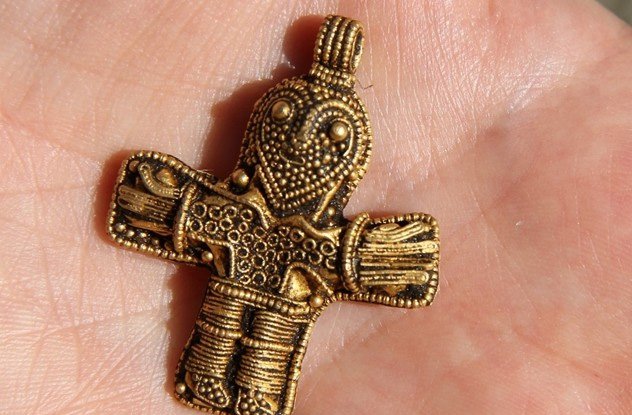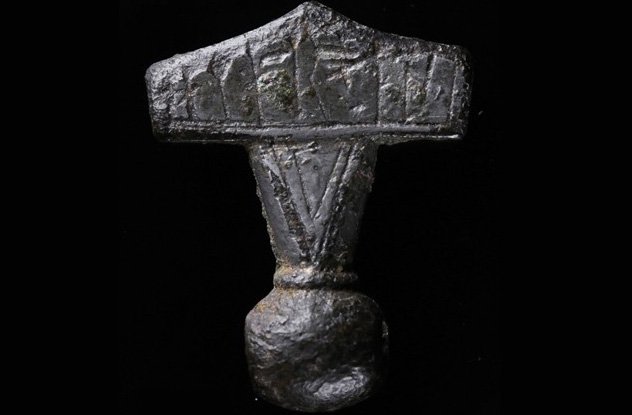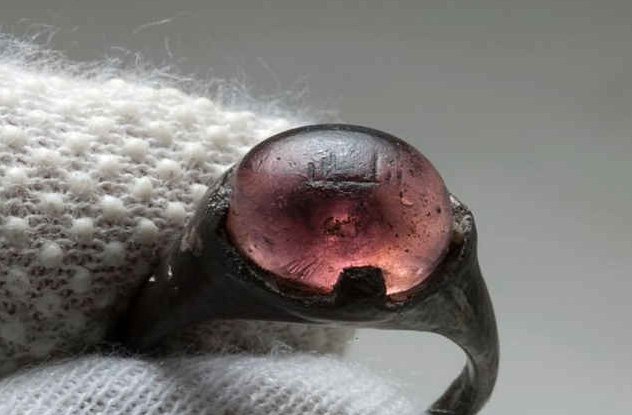(单词翻译:单击)
5.Climate Change Didn't Kill The Greenland Viking Settlement
5.气候变化没有毁灭格陵兰岛的维京人

For years, it has been widely believed within the scientific community that climate change killed the Viking settlement in Greenland. Specifically, it was assumed that the Greenland Vikings died within a 200-year period of worsening climate known as the Little Ice Age. However, a new study suggested that this might not have been the case.
多年来,科学界普遍相信,气候变化毁灭了格陵兰岛的维京人。确切地说,他们死于一场长达200年的气候恶化——小冰期。不过,一项新研究发现,事实也许并非如此。
It's true, the Vikings experienced "years of harsh and cold winters and summers," they were cut off from their homelands in Europe due to lack of timber for building ships, and they were left entirely on their own when Scandinavian traders stopped passing by Greenland, but these challenges "didn't knock them out." They were good at adapting and were able to outlive climate change and its devastating effects for centuries.
确实,维京人经历了很多年“严酷寒冷的冬夏”,由于缺乏造船的木材,失去了与欧洲故乡的联系。北欧商人不再经过格陵兰后,他们就与世隔绝了。但这些挑战“没有把他们抹去”。他们很善于适应环境,挺过了气候变化和它长达几世纪的灾难性影响。
So why did they disappear? Experts still do not know, but one thing's for sure. Climate change has been eliminated from the list.
那他们消失的原因是什么?专家们还不知道答案,但气候变化肯定不在其列。
4.Viking Parliament
4.维京议会

For years, the exact location of a Viking Parliament in Dingwall, Scotland, have eluded archaeologists and historians alike. It was only in 2013 when it was finally located. After excavating for more than a year, archaeologists hit the jackpot—they unearthed the remains of the lost Viking parliament at a parking lot known as the Cromartie Memorial car park.
多年来,考古学家和历史学家都没有找到苏格兰丁沃尔的维京议会,直到2013年才确定它的位置。发掘一年多后,考古学家中彩了——在一个叫Cromartie Memorial car park的停车场,维京议会遗迹出土了。
More popularly known as a "Thing," the Viking parliament was built on the instructions of a powerful Viking earl named Thorfinn the Mighty. Aside from the Thing, Thorfinn also commissioned the construction of a ditch, an aqueduct, and a road.
维京议会又名“Thing(东西)”,由一个叫强大托芬的维京伯爵下令建造,他还主导建造了一条沟、一座高架渠和一条路。
This discovery has elicited excitement among historians in the United Kingdom since it could "help them learn more about the Norse Vikings, who battled for control of land across the north of Scotland."
这个发现使英国历史学家兴奋异常,因为它能“帮他们更多地了解争夺苏格兰北海控制权的北欧海盗。
3.Denmark's Oldest Viking Crucifix
3.丹麦最古老的维京十字架

In 2016, a metal enthusiast named Dennis Fabricius Holm discovered what experts dubbed as "Denmark's oldest Viking crucifix." The pendant, which was found on the Danish island of Fune, measures 4.06 centimeters (1.6 in) in height and weighs 12.76 grams (0.45 oz).
2016年,金属探测器爱好者丹尼斯·霍尔姆发现了一件东西,专家称之为“丹麦最古老的维京十字架”。这个坠子在丹麦菲英岛出土,高4.06厘米,重12.76克。
Archaeologists estimated that the rare Viking crucifix dated back to the half of the 900s, making it much older than "Harald Bluetooth's runic stone in Jelling." Up until the discovery of the crucifix, Harald's massive runestones were considered to be the earliest representation of Jesus Christ on a cross in Denmark. This discovery suggested that the Vikings converted to Christianity much earlier than previously thought.
考古学家估计,这个罕见的维京十字架可以追溯到0900年代,于是比“蓝牙哈拉尔的耶灵石”还古老得多。在十字架出土之前,那两块大卢恩石被当作丹麦最早的耶稣受难十字架。这个发现表示,维京人皈依耶稣基督比以前认为的早得多。
2.Hammer Of Thor
2.雷神之锤

Since the first millennium, more than 1,000 hammer-shaped pendants have been unearthed across Northern Europe. For years, experts have debated over the true significance of these amulets. It was only recently when the mystery was finally solved—the pendants represented the Mjolnir, Thor's powerful hammer.
上个千年以来,北欧出土了1000多个锤子形状的坠子。科学家讨论了很多年这些护身符的真正意义,谜底最近才揭晓:这些坠子象征了妙尔尼尔,即雷神托尔令人生畏的铁锤。
This breakthrough was made when a team of Danish researchers unearthed a 10th-century Viking amulet on the island of Lolland in Denmark. This particular amulet was the only one with a runic inscription. The words "Hmar x is" was inscribed on the pendant, and when translated to modern English, it meant "This is a hammer."
这个突破的到来,是因为一个丹麦研究团队,他们在丹麦洛兰岛出土了一个10世纪的维京护身符。就是这个护身符,带有有古代卢恩铭文Hmar x is,翻译成现代英语就是“这是锤子”。
Basing on this discovery, the researchers concluded that the hammer-shaped pendants found across Northern Europe were Thor's mini-hammers, and Vikings wore them for protection.
基于这个发现,研究人员得出结论,北欧发现的锤子形坠子都是迷你雷神之锤,维京人带着他们以求保佑。
1.'For Allah' Inscription
1.“为了安拉”铭文

In the late 1800s, a team of archaeologists unearthed a ring with a pink-violet colored stone at Birka, Sweden. During the Viking era, Birka was an important trading center. The mysterious object was discovered inside a rectangular wooden coffin containing the remains of a female Viking. Intriguingly, the ring contained an Arabic inscription.
1800年代末,一个考古团队在瑞典比尔卡挖到一块带粉色和紫色的石头。在维京时代,比尔卡是一个重要的贸易中心。这块神秘的石头被放在一个长方形木棺中,里面还有一个维京妇女的遗骸。有趣的是,戒指上有一句阿拉伯语铭文。
Being the only ring with an Arabic inscription ever discovered in Scandinavia, the object caught the interest of an international team of researchers. They analyzed the ring, and in 2015 they announced that the inscription meant "For Allah" or "To Allah."
这是北欧发现的唯一带有阿拉伯铭文的戒指,于是吸引了一个国际化研究团队的注意。他们分析这个戒指,并于2015年宣布,这句铭文的意思是“为了安拉”或“致安拉”。
The researchers suggested that the woman who wore the ring could have been from the Islamic world or that "a Swedish Viking got (it), by trade or robbery, while visiting the Islamic Caliphate." Regardless of how the ring ended up in Birka, this monumental discovery proved that the Scandinavian Vikings did come in contact with Islamic kingdoms.
他们认为,带这个戒指的妇女可能来自伊斯兰世界,或者“一个瑞典维京人在拜访伊斯兰哈里发国时得到了(它),不是买的就是抢的”。不管这个戒指是如何来到比尔卡的,这个重大发现都证明,北欧维京人确实和伊斯兰王国有过来往。


